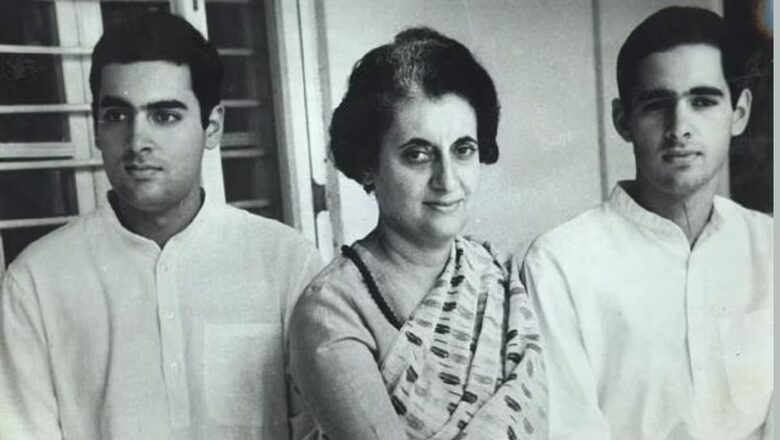
views
Earlier this week in Parliament, replying to the no-confidence motion towards his government brought forth by the Opposition coalition due to the Manipur violence, Prime Minister Narendra Modi delivered a long, impactful speech. During this speech, he highlighted various historical occurrences in the North-East which have culminated to the tense and violent situation which has re-emerged in Manipur. He proceeded to recall three instances involving actions taken by Jawaharlal Nehru and Indira Gandhi, which seem to have contributed heavily in complicating the communal situation in the region which has implications surfacing today. One of which, of Gandhi calling in the Indian Air Force to bomb Mizoram, on March 5, 1966 – as a quick-fix solution to end a communal conflict, seems to have triggered the durbari cabal, who have been relentless in defending her on all media platforms, since the prime minister’s speech.
As there has been excessive focus on Indira Gandhi’s nationalism over the past few days, it is pertinent to understand some of the other actions she has taken as the prime minister, which were certainly not in national interest. As Gandhi settled into the prime ministership, she began to, very quickly, make space for her younger son, Sanjay, as an extra-constitutional power centre.
It all began when she ensured that Sanjay’s company – Maruti Motors Private Limited — gets the deal from the Government of India, to make the Maruti car, despite large flaws in the model, no prior experience in building any kind of an automobile and unrealistic pricing. All rules were bent, even those related to national security – Sanjay’s company got their desired parcel of land to set up their manufacturing unit in Gurgaon for a measly sum, next to an airfield and ammunition dump (for those unaware, an automobile manufacturing unit cannot be set up next to an airfield and ammunition dump). Just so that Sanjay’s plans could go ahead hindrance-free, the then Defence Minister moved the airfield and ammunition dump – both resources of the Government of India to another location.
While his mother, the prime minister with the entire government of India at her disposal moved mountains to make Sanjay’s automobile dreams come true, somewhere in early 70s, Sanjay abandoned the car project. He wanted more power, more authority and began to weigh heavily on his mother’s prime-ministerial decisions. As Gandhi began to focus on nationalising enterprises, Sanjay became the chief negotiator with business groups around the country – he’d make the decisions on which industries would be allowed to remain private and which would be handed out licences, based on the cash-deal he arrived at with them. In that era, categorically called the ‘briefcase politics’ due to briefcases of cash going into the coffers of the Nehru-Gandhi family, Sanjay became the undisputed king of loot, with Gandhi rendered truly nothing more than a ‘goongi gudiya’. Sanjay began to use the Enforcement Directorate and the Income Tax Department to raid businesses and homes of leading industrialists to instil fear and extort money. Hundreds of crores of rupees went into running Sanjay’s parallel government of goons and roughnecks, who would further go around collecting money from medium and small businesses. So many millions he must have siphoned off, not even contributing to the party fund, that the day after Sanjay’s funeral, when uncle B.K. Nehru asked Rajiv Gandhi whether the money Sanjay had allegedly collected for the Congress was safe, Rajiv responded that only Rs 20 lakh had been found in the Congress almarihs out of the uncounted crores collected by Sanjay.
As Gandhi seemed to be losing popular support, with protests erupting all over the country in addition to the judicial decision which voided her candidacy in the recently concluded elections by which she lost her voting rights in Parliament, she, on Sanjay’s advice, proceeded to persuade the President of India, to announce a state of Internal Emergency in the country on June 25, 1975. Fundamental rights of citizens were suspended, almost all of the political opposition was jailed and India’s thriving democracy was brought to a grinding halt by a mother-son duo.
After the murder of all constitutional procedures, Sanjay truly became the undisputed ruler of India. One episode describing this phenomenon is when he had instituted country-wide mass-sterilisation drives. During an inspection tour in Delhi, he stood near Turkman Gate and announced the he wanted to be able to see Jama Masjid from the spot where he was standing. Once his royal edict was uttered, no matter how unrealistic, orders were issued and the Delhi Developmental Authority rushed to obey them, by immediately clearing the sea of shops, jhuggis, slum colonies and markets which stood between Sanjay and the Jama Masjid. As people protested, Gandhi and her son deployed the Central Reserve Police Force to quell the protestors.
The Congress symbol at the time was of a cow coddling her calf and as these heinous acts perpetrated by mother-son became commonplace, the people of India began to say, ‘bachada gai ko khaa gaya’ (the calf ate the cow). To my mind, none of these excesses would have taken place, had Gandhi reined in her children, respecting the sacred, constitutional position of the Prime Minister of India which she occupied and its implications on national security and integrity.
This is Part IV of a multi-part series. A look at the other parts:
Part I: Opinion | Indian Prime Ministers and Cases of Corruption: Rajiv Gandhi’s Indefensible Defence Deals
Part II: Opinion | Indian Prime Ministers and Cases of Corruption: Nehru and the Birth of Scams
Part III: Opinion | Indian Prime Ministers and Cases of Corruption: Indira’s Biggest Racket — ‘Garibi Hatao’
Priyam Gandhi-Mody is an author of three bestselling books, including ‘A Nation to Protect’. Her fourth book is expected to be released in October 2023. Views expressed in the above piece are personal and solely that of the author. They do not necessarily reflect News18’s views.




















Comments
0 comment